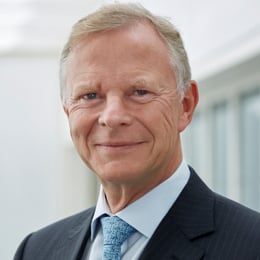The demand for aviation fuel is expected to more than double by 2050 compared to pre-COVID levels1. Considering the aviation industry already contributes about 1bn tonnes of CO2 per annum, over 2% of the entire global amount2, reaching zero emissions while meeting the growing demand for air travel is certainly a challenge – but it will also present opportunities.
While fuel efficiency, technological innovation, and improved flight logistics will improve matters, they will fall significantly short of the emission reductions needed. Decarbonizing the aviation industry will require widespread adoption of sustainable aviation fuels (SAF) by 2050. With SAF providing approximately 0.1% to 0.15% of total aviation fuel in 20223, we are still truly awaiting takeoff.
The aviation industry is stepping up to the mark, with numerous proposals, commitments, mandates and targets emerging from governments, industry bodies, and policymakers. 2022 also showed the first signs of a much-needed growth spurt, with the International Air Transport Association (IATA) estimating that SAF production topped 300 million liters during the 12 months, marking a 200% increase on the 2021 production figure of 100m liters4, and dwarfing 2019’s 24m liters. Big numbers until you consider that reaching 2050 goals will require an estimated 450bn liters of SAF to be produced annually5.
To reach these targets and lofty ambitions, the industry cannot but take a holistic approach, combining improved operational efficiency of airport and routes, advancements in aircraft design and technology, usage of sustainable aviation fuels (SAF), and market-based measures, such as carbon pricing and offsetting. But it's not all self-driven – regulation and policy will also be crucial in emission reduction.
At Topsoe, we are part of a SAF ecosystem that must work together and collaborate across the value chain to accelerate progress in SAF production and adoption. A successful transition to a low-carbon aviation industry needs collective effort to overcome barriers and accelerate both SAF production and adoption. At Topsoe, we are actively engaging in partnerships across the aviation industry to drive change.
This is also why we have consistently brought together some of the foremost industry experts and thought leaders; originally for our Fuel for Thought podcasts, then our SAF Summit in December 2022, and now for this very insightful Voices from the Sky SAF report. The active sharing of information and outlooks will only develop the SAF conversation and further cultivate collaboration across the value chain towards the common goal of emission reductions.
A big thank you to all the Voices from the Sky participants who took part in the in-depth interviews and analyses of their specific areas of expertise. You have each helped create a fascinating and multi-perspective analysis of the current SAF market and upcoming opportunities and trends.
We hope that this Voices from the Sky SAF report provides not just information and insight but also inspiration for the future advancement of the SAF industry.
Roeland Baan,
President and CEO, Topsoe
